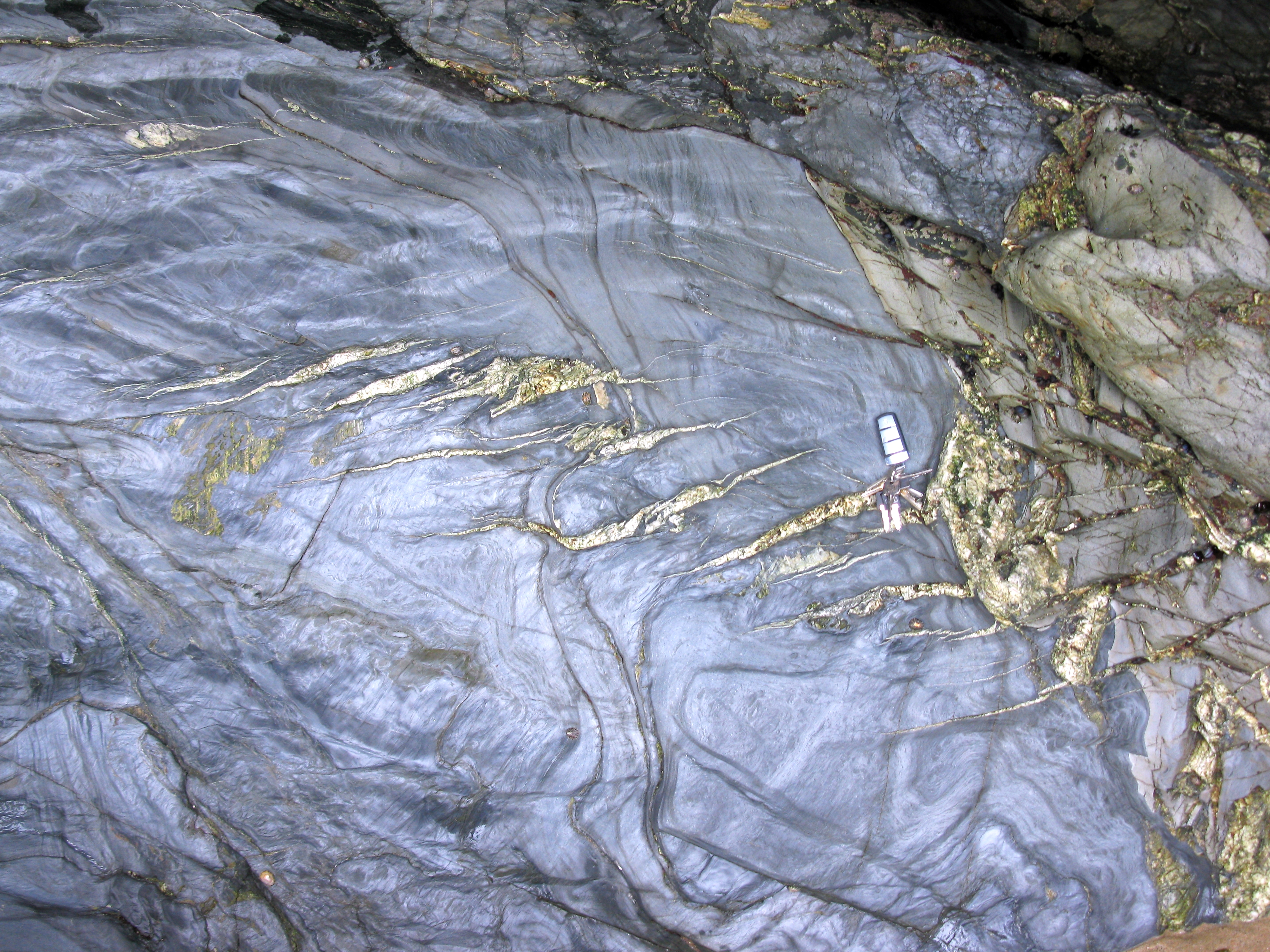En Echelon Veins on:
[Wikipedia]
[Google]
[Amazon]
 In
In
 In
In structural
A structure is an arrangement and organization of interrelated elements in a material object or system, or the object or system so organized. Material structures include man-made objects such as buildings and machines and natural objects such as ...
geology
Geology () is a branch of natural science concerned with Earth and other astronomical objects, the features or rocks of which it is composed, and the processes by which they change over time. Modern geology significantly overlaps all other Ea ...
, en échelon veins, "en échelon gash fractures" or "Tiger Stripes" are structures within rock caused by noncoaxial shear.
En echelon veins can be parallel or subparallel, closely-spaced, overlapping or step-like minor structural features in rock. These step-like features can be faults, or tension fractures, that are oblique to the overall structural trend. They originate as tension fractures that are parallel to the major stress orientation, σ1, in a shear zone
In geology, a shear zone is a thin zone within the Earth's crust or upper mantle that has been strongly deformed, due to the walls of rock on either side of the zone slipping past each other. In the upper crust, where rock is brittle, the shea ...
. They are subsequently filled by precipitation
In meteorology, precipitation is any product of the condensation of atmospheric water vapor that falls under gravitational pull from clouds. The main forms of precipitation include drizzle, rain, sleet, snow, ice pellets, graupel and hai ...
of a mineral, typically quartz
Quartz is a hard, crystalline mineral composed of silica ( silicon dioxide). The atoms are linked in a continuous framework of SiO4 silicon-oxygen tetrahedra, with each oxygen being shared between two tetrahedra, giving an overall chemical ...
or calcite
Calcite is a carbonate mineral and the most stable polymorph of calcium carbonate (CaCO3). It is a very common mineral, particularly as a component of limestone. Calcite defines hardness 3 on the Mohs scale of mineral hardness, based on scra ...
. As soon as they form, they begin to rotate in the shear zone. Subsequent growth of the fracture therefore causes the vein to take on a sigmoidal shape. They can be used to determine the incremental kinematics of the deformation history of the rock.
References
Structural geology {{geology-stub